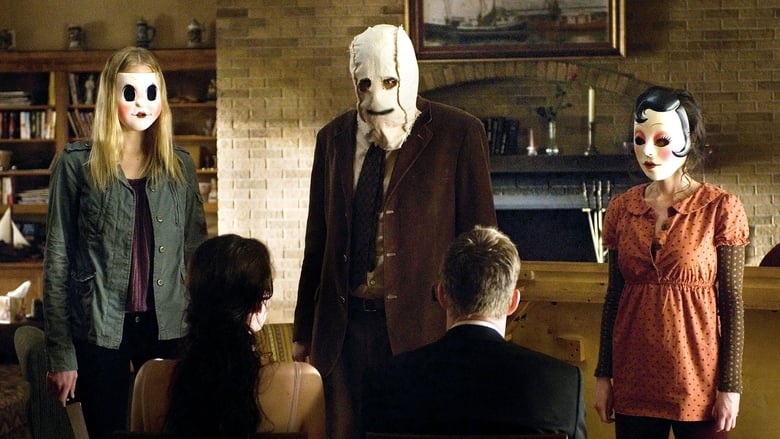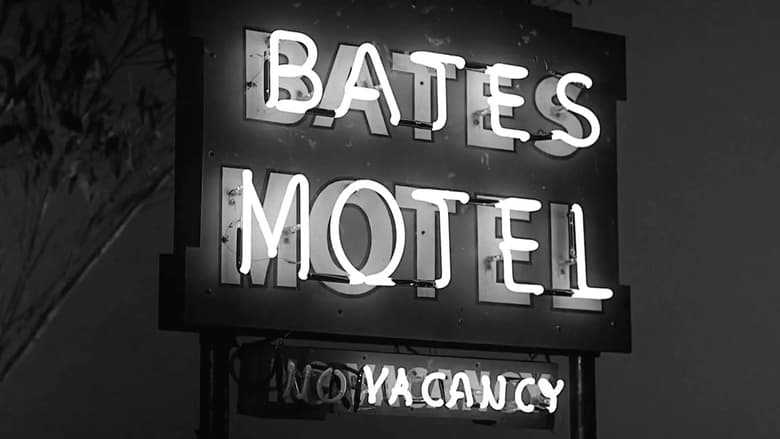Best slasher films to watch now
Prepare for a bloodbath with our curated selection of the best slasher films, showcasing the genre's most terrifying villains and suspenseful encounters that have shaped horror history.



The slasher genre, while often simplified to masked killers and high body counts, has a rich and complex history that continues to evolve. It arguably found its modern footing with films like Psycho and Black Christmas, laying the groundwork for the tropes we know and love.
The late 70s and 80s saw the genre explode into mainstream popularity, giving us enduring icons such as Michael Myers in Halloween, Jason Voorhees in Friday the 13th, and Freddy Krueger in A Nightmare on Elm Street. These films didn't just introduce memorable villains; they often played with themes of suburban dread, repressed trauma, and the consequences of teenage rebellion.
By the mid-90s, the genre got a clever meta-revival with Scream, which deconstructed and commented on the very rules its predecessors established, injecting humor and self-awareness. More recent entries like The Strangers or Hatchet demonstrate that the slasher formula can still be incredibly effective, leaning into atmospheric tension and brutal practicality.
What makes a slasher film truly stand out is often the killer's presence, the effectiveness of the scares, and how it plays with audience expectations. Whether it's the silent, unstoppable force or the wisecracking sadist, the best slasher films leave a lasting impression long after the credits roll.
14. The Texas Chainsaw Massacre (2003)
This 2003 remake of The Texas Chainsaw Massacre offers a grittier and more polished take on the original's premise. Directed by Marcus Nispel and produced by Michael Bay, this version focuses on a group of young adults traveling through Texas who encounter the Hewitt family, including Leatherface. The remake ramps up the gore and intensity, providing a more visually graphic experience than the 1974 film. It was a commercial success and helped reignite interest in the franchise for a new generation, though it sparked debate among fans of the original regarding its different tone and approach.

13. Hatchet (2006)
Hatchet, released in 2006, is a deliberate throwback to the classic slasher films of the 80s. Set in the Honey Island Swamp of Louisiana, it introduces Victor Crowley, a deformed, supernatural killer with immense strength and a penchant for brutal kills. The film doesn't take itself too seriously, focusing on delivering creative and over-the-top gore, paying homage to the practical effects of the genre's heyday. It's a fun, gory ride for fans who appreciate the practical effects and relentless nature of old-school slashers.

12. The Hills Have Eyes (1977)
Wes Craven's The Hills Have Eyes (1977) blends slasher elements with survival horror. It follows a suburban family on a road trip who become stranded in the Nevada desert and are hunted by a family of cannibalistic mutants. While not a traditional masked-killer slasher, it features brutal violence and the stalking of victims, fitting within the broader category. The film is known for its intense, disturbing tone and portrayal of primal fear. Craven has stated the film was partially inspired by the legend of Sawney Bean, a 15th or 16th-century Scottish family of cannibals.

11. The Strangers (2008)
The Strangers, released in 2008, leans into the home invasion subgenre but features masked killers and a slasher sensibility. The film follows a couple staying in a secluded vacation home who are terrorized by three masked assailants with no clear motive beyond sheer malice. Its strength lies in its relentless tension and the unsettling randomness of the attacks. The film famously uses the tagline "Because you were home," which perfectly encapsulates the chilling lack of reason behind the horror. It's a brutal and effective film that preys on the fear of being unsafe in your own space.

10. My Bloody Valentine (1981)
My Bloody Valentine, released in 1981, brings the slasher to a mining town with a dark past. The story revolves around a small town celebrating Valentine's Day for the first time in twenty years after a tragic mining accident caused a killer to go on a rampage. When the celebrations begin, so do the murders, seemingly by the same killer wearing mining gear. The film stands out for its unique setting and the killer's distinctive look. Interestingly, the original theatrical release was heavily cut by the MPAA due to its gore, but later versions restored some of the excised footage, giving viewers a fuller picture of its gruesome effects.

9. Sleepaway Camp (1983)
Sleepaway Camp, from 1983, is a cult classic in the slasher genre, primarily known for its shocking and unforgettable twist ending. Set at a summer camp (another popular slasher locale), the film follows shy Angela Baker, who is sent to Camp Arawak with her cousin. Soon after their arrival, campers and counselors begin to meet gruesome ends. The film has a somewhat low-budget feel, but its quirky characters, camp setting, and escalating violence build towards a final reveal that cemented its place in horror history. It's a film that viewers rarely forget once they've seen the ending.

8. Black Christmas (1974)
Released in 1974, the same year as Texas Chain Saw Massacre, Black Christmas is often cited as one of the earliest and most influential slasher films. Directed by Bob Clark (who later directed A Christmas Story!), the movie features a group of sorority sisters terrorized during the holidays by a mysterious killer making obscene phone calls from inside the house. The film is known for its unsettling atmosphere, point-of-view shots from the killer's perspective, and ambiguous ending. It predates Halloween and Friday the 13th in many ways and deserves recognition for helping to shape the genre.

7. Child's Play (1988)
Child's Play brought a unique villain to the slasher party in 1988: a killer doll possessed by the soul of a serial killer. Chucky, voiced with wicked glee by Brad Dourif, quickly became a horror icon. The concept of a seemingly innocent toy turning into a pint-sized terror was both creepy and darkly humorous. The film follows young Andy Barclay, who receives the 'Good Guy' doll for his birthday, only to discover the evil lurking within. While later films leaned more into comedy, the original Child's Play plays the horror straight, creating genuine scares from the unexpected source of the threat.

6. Psycho (1960)
While not a slasher in the modern sense, Alfred Hitchcock's Psycho (1960) is undeniably a foundational film for the genre. Its infamous shower scene, shocking twist, and focus on a disturbed killer paved the way for everything that followed. The film's daring portrayal of violence and psychological instability was groundbreaking for its time. Hitchcock famously bought up as many copies of the original novel as possible to prevent the twist ending from being revealed before the film's release. It's a masterpiece of suspense and a crucial piece of horror history that directly influenced the slasher boom of the late 70s and 80s.

5. Friday the 13th (1980)
Friday the 13th, from 1980, took the slasher to the summer camp. While Jason Voorhees wasn't the killer in this initial entry (that honor belongs to his mother, Pamela), the film established the iconic setting of Camp Crystal Lake and many of the genre's staples: a group of counselors, secluded location, and creative kills. The film's success, despite mixed reviews, cemented the camp setting as a horror staple and launched one of the most prolific slasher franchises ever. The film's gore effects were handled by the legendary Tom Savini, contributing significantly to its impact.

4. The Texas Chain Saw Massacre (1974)
The Texas Chain Saw Massacre, released in 1974, is a gritty, raw, and utterly terrifying experience. Tobe Hooper's film feels less like a traditional movie and more like a horrifying documentary of a nightmare. It follows a group of friends who fall victim to a family of cannibals, including the infamous Leatherface, known for his mask of human skin and his trusty chainsaw. Despite the title and reputation, the film is surprisingly low on explicit gore; its horror comes from its oppressive atmosphere, disturbing sound design, and the sheer depravity of the villains. It was marketed as being based on a true story, which added to the fear, although it was only loosely inspired by the crimes of Ed Gein.

3. Scream (1996)
Wes Craven revitalized the slasher genre in 1996 with Scream, a smart, self-aware horror film that both celebrated and satirized the tropes established by its predecessors. Set in the fictional town of Woodsboro, the story follows a group of high school students who become targets of a mysterious killer, Ghostface, who taunts them with horror movie trivia. The film is incredibly meta, with characters explicitly discussing the 'rules' of surviving a horror movie, often right before those rules are broken. This clever approach, combined with genuinely suspenseful sequences and a whodunit element, made Scream a massive hit and spawned a new wave of self-referential horror. The opening scene, featuring Drew Barrymore, is particularly iconic and set the tone for the film's unpredictable nature.

2. A Nightmare on Elm Street (1984)
A Nightmare on Elm Street brought a fresh, supernatural twist to the slasher genre in 1984. Wes Craven dared to take the terror into the dream world, introducing the truly unique and darkly humorous villain, Freddy Krueger. Robert Englund's portrayal of Freddy, a scarred child killer who preys on teenagers in their sleep, is legendary. The film's innovative concept meant that escaping the killer wasn't as simple as running away; if you die in your dream, you die for real. This opened the door for incredibly creative and surreal death sequences. It also marked the film debut of Johnny Depp! The blurring lines between reality and nightmare, combined with Freddy's distinct personality, set this film apart from its contemporaries and launched a highly successful franchise.

1. Halloween (1978)
John Carpenter's Halloween didn't invent the slasher, but it certainly perfected the formula and codified many of the genre's enduring tropes. Released in 1978, this film is a masterclass in suspense, relying on atmosphere and suggestion rather than gratuitous gore. The simple, yet terrifying, concept of an unstoppable evil force stalking babysitters on Halloween night struck a nerve with audiences. Jamie Lee Curtis became the quintessential 'final girl' as Laurie Strode, facing off against the silent, masked killer Michael Myers. Interestingly, the iconic mask worn by Michael Myers was actually a painted Captain Kirk mask from Star Trek, purchased for a mere $1.98! The film's minimalist score, also composed by Carpenter, is instantly recognizable and adds immensely to the feeling of dread. It's a foundational piece of horror cinema that continues to influence filmmakers today.

